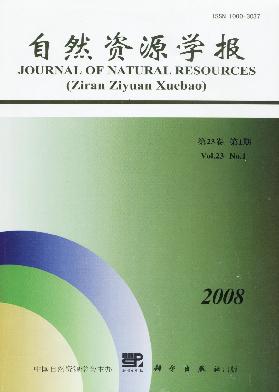Special Column:Celebration of the 70th Anniversary of IGSNRR, CAS
YANG Yan-zhao, FENG Zhi-ming, HUANG He-qing
Global warming affects regional sustainable development but there has been lacking in an appropriate approach to assess the impacts. By applying Arc/GIS and Visual Foxpro technologies, this study performs systematical simulation and analysis of the variations in the monthly cropland water balance for 12 major crops in Northwest China over the last 40 years (1960-2000). For 313 counties in the region, it shows that the precipitation and soil water are generally unable to meet the water requirements of the crops. The deficit of cropland water tends to increase from the southeast to the northwest and from mountains to lower basins. By analyzing the anomaly percentage of cropland water balance, this study shows that during the last 40 years, the western part of Northwest China, mainly the Xinjiang Uygur Autonomous Region, has shown a moderate increase both in temperature and precipitation, a slight shift to a warm-wet pattern in climate, and a moderate decrease in water deficit. In contrast, the central and eastern parts of the region have encountered a moderate increase in temperature, a relatively significant decrease in precipitation (especially in recent 10 years), and a moderate increase in water deficit. Furthermore, this study classifies the region into 13 agro-ecological zones and examines the variance of cropland water balance over the last 40 years through analyzing the variation of Cv in these zones. It is shown that in Hexi Corridor of Gansu and Xinjiang Uygur Autonomous Region, Cv is the lowest (<0.10), while in hilly areas around Sichuan Basin Cv takes the highest value of 2.1. In most parts of Northwest China, a significant positive correlation between cropland water balance and precipitation can be identified (r=0.85), indicating that precipitation has been a dominant factor affecting cropland water balance. The correlations of cropland water balance with the maximum and minimum temperature are less significant, particularly the latter. Cropland water balance is also closely related with evapotranspiration (r=-0.88), demonstrating the impact of climate change on cropland water balance.
